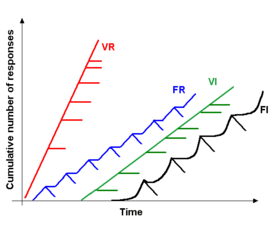 We all know what it feels like to be tethered to technology these days. It’s not just our kids – it’s the rest of us as well. Probably one of the biggest hooks is the cell phone, and there are just about as many cell phones out there (6.8 billion) as there are people on the Earth (just over 7 billion). The compulsive checking and responding that we all do, which makes it appear that we can become addicted to technology, includes things like:
We all know what it feels like to be tethered to technology these days. It’s not just our kids – it’s the rest of us as well. Probably one of the biggest hooks is the cell phone, and there are just about as many cell phones out there (6.8 billion) as there are people on the Earth (just over 7 billion). The compulsive checking and responding that we all do, which makes it appear that we can become addicted to technology, includes things like:
- Social media (e.g., Twitter, Facebook, Instagram)
- Texting
- News feeds
- Gaming (e.g., Clash of Clans…games that require you to check as they continue even when you aren’t playing)
As I’ve said many times, these technologies aren’t inherently bad. Plus, we like to use various technologies because they can meet our psychological needs (for social connection, power/esteem, freedom, and fun). Thus, there isn’t just one reason why we can get sucked into technology. People are complicated and so is our technological world. However, when we think of technology addiction (or Internet addiction), and why most of us do things like compulsively checking our cell phones, there is one particular mechanism that appears to be involved that can explain this powerful hook: the variable ratio reinforcement schedule.
A Little About Reinforcement Schedules
If you ever took an introductory psychology course, chances are you ran across B.F. Skinner. He was a psychologist and behaviorist who looked at how behavioral responses were established and strengthened by different schedules of reinforcement. For instance, a rat in a cage that is taught to press a lever to earn a food pellet (reward) might be taught that it gets one food pellet for every 3 presses of the lever. This would be an example of a fixed interval reinforcement schedule.
 Although there are a variety of types and subtypes of reinforcement schedules that can affect the likelihood of different behavioral responses, I’m going to briefly discuss two types: a variable ratio reinforcement schedule and a variable interval reinforcement schedule.
Although there are a variety of types and subtypes of reinforcement schedules that can affect the likelihood of different behavioral responses, I’m going to briefly discuss two types: a variable ratio reinforcement schedule and a variable interval reinforcement schedule.
Variable Ratio Reinforcement Schedule
A variable ratio reinforcement schedule occurs when, after X number of actions, a certain reward is achieved. Using the rat example, the rat doesn’t know how many presses of the lever produces the food pellet. Sometimes it is 1, others it is 5, or 15…it never knows. It soon realizes that the faster it pushes the lever though, the sooner it will receive the pellet. Researchers have found that variables ratio schedules tend to result in a high rate of responding (refer to the VR line in the graph above). Also, variable ratios are extremely resistant to extinction. In the case of the rat, if the researchers stops giving pellets of food after lever presses, the rat will push the lever frequently for a very long time before it finally gives up (which is the extinction part). Slot machines are a real world example of a variable ratio.
Variable Interval Reinforcement Schedule
A variable interval reinforcement schedule is when the reward after a certain action by the agent (e.g., the rat pushes the lever) occurs after a variable amount of time. Thus, because the rat pushed the lever, a reward will come. The rat just doesn’t know when. Importantly, additional presses of the lever at this point do not increase the speed at which the rat will receive the food pellet (unlike with a variable ratio reinforcement schedule). Checking email compulsively (which I tend to do…but I’m not alone!) is a real world example of a variable interval reinforcement schedule. Checking my email more frequently doesn’t actually make new emails arrive any faster.
HOWEVER, there are three very important features of our daily technology use that make the “addictive” technologies more like a variable ratio reinforcement schedule than a variable interval reinforcement schedule. This is important because the variable ratio reinforcement schedule seems to be a more powerful mechanism with regard to getting us hooked on certain types of technologies. Here are those 3 features:
- Frequent checking does increase the likelihood that we will see the email, text, Facebook comment as soon as it arrives. The frequent checking doesn’t actually make it arrive any faster, but I will be likely to catch it as soon as it arrives.
- When we check our phones, we don’t have just stop at one medium (e.g., email). We might check email, then check our texts, then check out our news feed, and so on. We don’t know exactly when we will find something interesting on the Internet or on our smart phones, but we do know that if we keep checking, we eventually will. It might be an email, text, tweet, or interesting sports story about our favorite team – we will stumble upon something interesting (and thus reinforcing) if we just keep searching.
- When we take the action to email, text, post something to Facebook, or tweet others, we increase the likelihood of getting a response. Thus, our actions can influence when we receive a reinforcement (again, in the form of a text, tweet, email, news nugget, etc.). However, there are always unpredictable elements left – who is going to text/email/comment on our post and what will he or she say?
What Does All of This Mean?
You might be wondering at this point why I’ve gone into this much detail about technology addiction and variable ratio reinforcement schedules. It turns out, variable ratio reinforcement schedules are involved in many behavioral addictions, such as gambling. Yes, that’s right – in a sense, compulsively checking our phones is much like compulsive gambling. In fact, many “obsessions” and hobbies also involve this variable ratio reinforcement schedule, such as:
- Fishing
- Hunting
- Basically any type of collecting (e.g., collecting Pokemon cards, stamps)
- Looking for bargains while shopping at the mall, flea markets, or garage sales
- Channel surfing on TV (seems that Internet surfing has largely supplanted that past time)
Importantly, variable ratio reinforcement schedules directly act on primitive parts of the brain in powerful ways. This makes them very difficult to fight. In fact, most addictive drugs activate these same primitive parts of the brain. I’ll go more into why we are so ensnared by technology as well as what is happening in our brains when we are getting hooked into technology in my next blogs.
